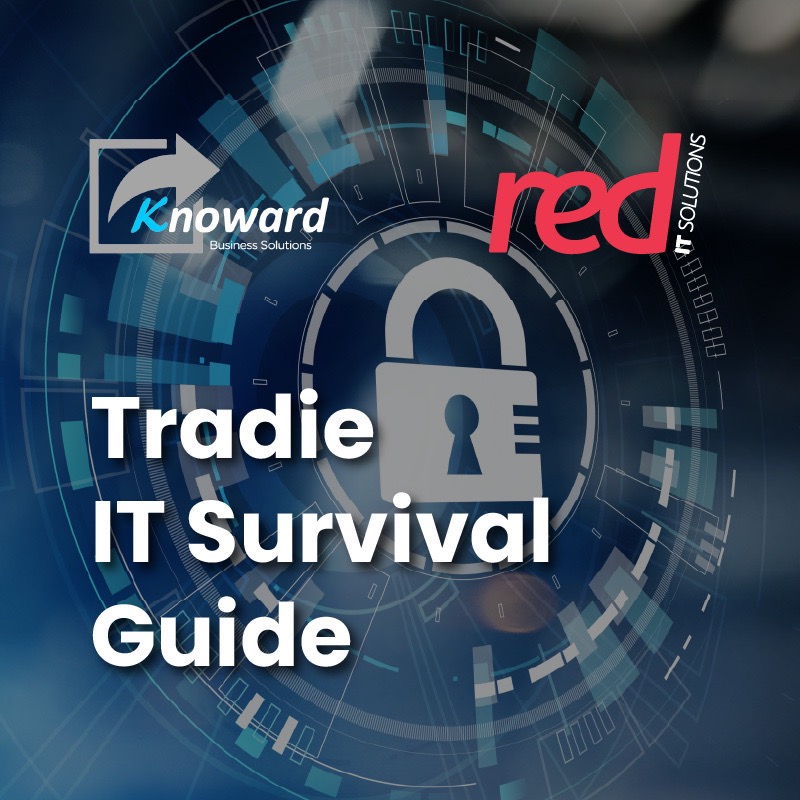
March signals a season of transition, making it the perfect time to reassess the core systems that keep your business running.
One of the most overlooked yet critical aspects of any business is its IT infrastructure—the combination of networks, servers, cloud platforms, and security measures that everything else relies on.
A strong IT foundation means efficiency, security, and growth. A weak one? Hidden bottlenecks, constant frustrations, and expensive downtime.
This month, in our Modern Business Survival Guide, we’re cutting through the noise to explain why your IT infrastructure matters more than you think, how to spot weaknesses before they become disasters, and the practical steps to ensure your IT is helping, not hindering, your business.
Why IT Infrastructure is More Than Just “The Tech Guy’s Problem”
Infrastructure is one of the biggest factors affecting business productivity, security, and scalability. Yet, many businesses ignore it until something breaks.
Here’s the reality:
📉 Poor IT Infrastructure Costs You in Hidden Ways
Many businesses assume their IT setup is “fine” because it hasn’t crashed (yet). But the biggest problems aren’t sudden failures—they’re slow, creeping inefficiencies that bleed time and money every day.
Here’s what poor infrastructure looks like:
🚨 Slow Systems: Every extra second waiting for a file to load, an application to open, or a report to generate adds up over time. Slow infrastructure is a hidden tax on productivity.
🚨 Unstable Networks: Frequent disconnects, unreliable Wi-Fi, or network lag can be frustrating at best and disruptive at worst, especially for teams relying on real-time collaboration.
🚨 Aging Hardware: Computers and servers don’t last forever. Outdated systems slow down, become security risks, and eventually fail at the worst possible time.
🚨 Security Gaps: Infrastructure that hasn’t been updated or properly maintained is a goldmine for cybercriminals. If your business is running on old systems, you are a prime target for cyberattacks.
These aren’t hypothetical risks—they happen in real businesses every day, often unnoticed until something critical goes wrong.
The Real Cost of a Weak IT Foundation
Let’s put some numbers to it:
🔹 A slow system wastes an average of 12 minutes per employee per day—that’s 1 hour per week, 50 hours per year, per person. Multiply that across your workforce, and the loss becomes staggering.
🔹 An aging server can cost up to 50% more in maintenance than replacing it. Businesses often delay upgrading hardware to “save money,” but in reality, the cost of maintaining old systems outweighs the investment in new ones.
🔹 Network downtime costs businesses between $5,000 to $20,000 per hour on average. Whether due to equipment failure, software issues, or cyberattacks, an unstable IT environment can grind operations to a halt—resulting in frustrated customers, lost sales, and expensive emergency fixes.
🔹 Cyberattacks often exploit outdated systems—60% of hacked businesses fail within six months. If your IT infrastructure is running on unsupported software, unpatched systems, or weak security measures, you are at high risk of ransomware attacks, data breaches, and compliance failures.
It’s not just about keeping things running—it’s about stopping unnecessary losses before they happen.
How to Build a Strong, Future-Proof IT Foundation
Your IT infrastructure is either a business enabler or a business bottleneck. Here’s what every modern company needs:
🛠 Reliable & Fast Network Infrastructure
• Slow or unreliable networks kill productivity. Poor Wi-Fi coverage, outdated routers, and slow internet speeds create unnecessary friction in day-to-day work.
• Upgrading to business-grade internet and structured networking solutions prevents unnecessary delays.
• If you have remote teams, VPN solutions and secure cloud access ensure seamless, safe connectivity.
📦 Cloud & Hybrid Solutions for Scalability
• Moving from on-premise servers to the cloud can eliminate unnecessary maintenance costs and downtime.
• Hybrid models (cloud + on-site) offer flexibility and business continuity in case of disasters.
• Microsoft 365, SharePoint, and cloud-based storage solutions ensure employees can work from anywhere without compromising security.
🔒 Security-First IT Approach
• Firewalls, multi-factor authentication (MFA), and endpoint security should be standard, not optional.
• Cybercriminals target SMBs just as much as large corporations—assuming “we’re too small to be a target” is a dangerous mindset.
• A zero-trust security model (where access is granted only when absolutely necessary) is becoming the new best practice for businesses of all sizes.
💾 Proactive System Health Monitoring
• Do you know the age and condition of your devices, servers, and backup systems? If not, you might be one unexpected failure away from a costly emergency.
• Automated system monitoring detects potential failures before they happen, allowing preemptive fixes.
• Investing in preventative maintenance is cheaper than emergency fixes.
Common Signs Your IT Infrastructure Needs Attention
Still not sure if your IT is holding you back? Here are a few red flags to watch for:
⚠️ Your team complains about slow systems or frequent glitches. If employees are constantly frustrated with technology, their productivity is suffering—even if they don’t say it outright.
⚠️ Your business has grown, but your IT hasn’t. Scaling a business means scaling its IT, too. If your infrastructure was set up years ago, it might not be able to handle current demands.
⚠️ You don’t have a clear disaster recovery plan. If something goes wrong, do you know how long it would take to get back online? If the answer is uncertain, your IT isn’t resilient enough.
⚠️ Your backups are out of date or untested. A backup is only useful if it works when you need it. When was the last time you tested yours?
If any of these sound familiar, it’s time for an infrastructure health check.
At Red IT Solutions, we don’t just fix problems—we help businesses prevent them with smart, scalable infrastructure solutions that grow with them.
—
Next Month: What Happens When IT Fails?
Even the best infrastructure can face unexpected disruptions. In April, we’ll dive into disaster recovery, backups, and how to protect your business from IT failures.
Because waiting until something breaks is the most expensive way to manage IT.
Until then—enjoy the cooler weather, and let’s make sure your IT is built to last.




